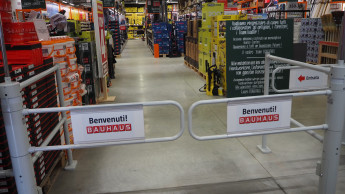In 2023, Europeans have a total of around 12.1 trillion euros at their disposal to spend on food, housing, services, energy costs, private pensions, insurance, holidays, mobility or even consumer desires. Per capita, this equates to an average purchasing power of 17,688 euros, which means nominal growth of 5.8 per cent compared to the revised value of the previous year. This is according to the new study "GfK Purchasing Power Europe 2023". How much consumers actually have available for spending and saving, however, differs greatly from country to country and also depends on how consumer prices develop in 2023.
In 2023, as in previous years, Liechtenstein tops the purchasing power rankings by a clear margin. The people of Liechtenstein have per capita purchasing power of 68,843 euros, which is almost 3.9 times higher than the European average. Switzerland and Luxembourg follow in second and third place. While the per capita purchasing power of the Swiss, at 49,592 euros, is 2.8 times that of the average European, the Luxembourgers have a disposable net income of 40,931 euros per capita. This is more than 2.3 times higher than the European average.
Ireland biggest winner
All the other countries in the top 10 also have very high per capita purchasing power, at least 47 per cent above the European average. The biggest winner is Ireland: after just barely making it into the top 10 last year, the island nation was able to move up another four places this year and occupies sixth place. With 26,882 euros per capita, the Irish are exactly 52 per cent above the European average.
Germany drops one place
There were also some other changes within the purchasing power top 10: Iceland and Denmark each moved up one place to fourth and fifth, while Austria even moved up two places to seventh. Norway, on the other hand, dropped four places, Germany one and the United Kingdom three. As a result, the three countries slip to the bottom of the purchasing power top 10.
Overall, 16 of the 42 countries surveyed are above the European average. This contrasts with 26 countries whose per capita purchasing power is below average - including Spain, which at 16,449 euros per capita is slightly below the European average. As in previous years, Ukraine brings up the rear. People there have only 2,478 euros per capita at their disposal, exactly 14 per cent of the European average.

 Menü
Menü
















